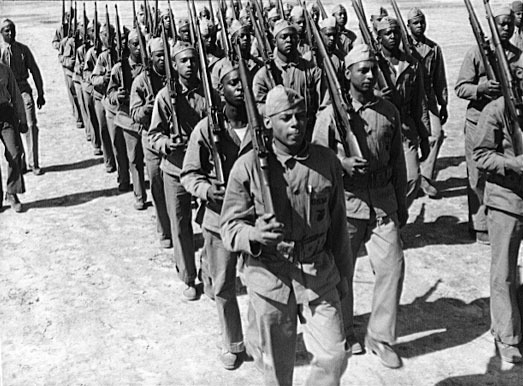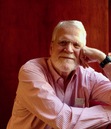Mark Scott Smith's Blog: Enemy in the Mirror, page 92
April 13, 2017
Patton’s Weather Prayer
Midst bad weather in the Battle of the Bulge, General George S. Patton commissioned his chaplain to write a prayer for good weather and victory.
Almighty and most merciful Father, we humbly beseech Thee, of Thy great goodness, to restrain these immoderate rains with which we have had to contend. Grant us fair weather for Battle. Graciously hearken to us as soldiers who call upon Thee that, armed with Thy power, we may advance from victory to victory, and crush the oppression and wickedness of our enemies and establish Thy justice among men and nations.
At the suggestion of the chaplain, Patton also sent this Christmas message to his staff.

The post Patton’s Weather Prayer appeared first on Enemy in the Mirror.
April 10, 2017
Philippine Invasion 1944
[image error]
In December 1944, U.S. Army troops, supported by the Navy and Air Force, made an amphibious landing on Mindoro Island in the Philippines. With the aid of local guerrillas, U.S. forces easily defeated the relatively small detachment of Imperial Japanese Army forces stationed on the island.
With the capture of Mindoro, U.S. forces were able to establish airfields within fighter range of the Lingayen Gulf where the next major amphibious assault against the island of Luzon was planned.
The post Philippine Invasion 1944 appeared first on Enemy in the Mirror.
April 6, 2017
R.I.P. Glenn Miller – 1944
Alton Glenn Miller (1904 – 1944) was a big band star in the American swing era whose recordings were best-sellers from 1939 to 1943. Traveling to entertain U.S. troops in France in December 1944, his single-engine UC-64 Norseman disappeared in bad weather over the English Channel.

Of several theories proposed for the crash, it seems unlikely that Glenn Miller’s aircraft was hit by a bomb jettisoned from an Allied bomber or shot down by the Luftwaffe. More probably, the airplane crashed because of a faulty carburetor that was known to malfunction in cold weather.

In February 1945, with the nation mourning his loss, his wife Helen Miller accepted his Bronze Star medal for heroic and meritorious service in a combat zone.

Listen: Glenn Miller Big Band Favorites
The post R.I.P. Glenn Miller – 1944 appeared first on Enemy in the Mirror.
April 3, 2017
Was Hitler High?
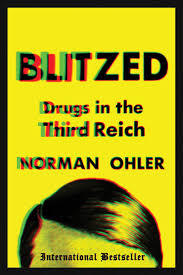
A new book by Norman Ohler makes sensational claims that not only Adolf Hitler, but much of the civilian population of Nazi Germany, was high on drugs. While there is evidence that methamphetamines (e.g. Pervitin) were extensively used by the armed forces, it is dubious that this was the case of ordinary citizens.
Hitler was given an unusual (and inappropriate) amount of injectable drugs such as vitamins, testosterone, other hormones, phosphorus, and dextrose by his personal physician Theodor Morell for symptoms including stomach pains, headaches, nausea, shivering and diarrhea. Hitler also apparently received IV oxycodone (Eukodal) and Pervitin on occasion, but the suggestion that he was an addict, high on drugs, during the last phases of the war seems to be hyperbole-and certainly no excuse for his evil behavior.
The post Was Hitler High? appeared first on Enemy in the Mirror.
March 30, 2017
Race Riot Guam – December 1944
In July 1944, the U.S. Army and Marines recaptured Guam from the Japanese at a cost of 1,783 Americans killed and ~6000 men wounded. ~18,000 Japanese died. After the battle, the Allies developed five airfields on Guam to attack targets in the Western Pacific and on mainland Japan.
Occupying Guam, racial tensions developed among enlisted U.S. Marines when an all-black supply depot company arrived. White Marines, trying to prevent blacks from socializing with Guamanian women, shouted racial slurs, threw rocks and occasional smoke grenades into the depot area.
Tension escalated when a white sailor killed a black Marine in a fight over a woman; and a black sentry fatally wounded a white Marine who was harassing him. Subsequently, each of these men was court-martialed for manslaughter.
On Christmas Eve 1944, with rumors circulating among black and white Marines that one of their own had been injured or killed, truckloads of angry Marines harassed each other’s turf without injuries. On Christmas day, two black Marines were killed in separate incidents by drunken whites.
On December 26, a jeep of white Marines fired on the black Marine depot, injuring a white MP. A group of armed blacks chasing the whites’ jeep, were stopped at a roadblock and charged with unlawful assembly, theft of government property and attempted murder.
43 Marines (including a few whites) were court-martialed and given prison terms of several years each. The National Association for the Advancement of Colored People later successfully campaigned to have the guilty verdicts overturned and the black marines were released from prison in 1946.
The post Race Riot Guam – December 1944 appeared first on Enemy in the Mirror.
March 27, 2017
Palawan Massacre – Dec 1944
In December 1944, in order to prevent their rescue by the advancing Allies, units of the Japanese 14th Area Army, under the command of General Tomoyuki Yamashita, murdered 139 Allied POWs at Puerto Princesa, Philippines.
150 POWs hiding in three covered trenches during an air raid warning were doused with gasoline and set afire. Escapees were machine-gunned immediately or tracked down and killed. Only eleven POWs survived.
The December 1944 Palawan massacre instigated a series of American POW rescue missions including the raids at Cabanatuan in January 1945, and Santo Tomas , Bilibid Prison and Los Baños in February 1945.
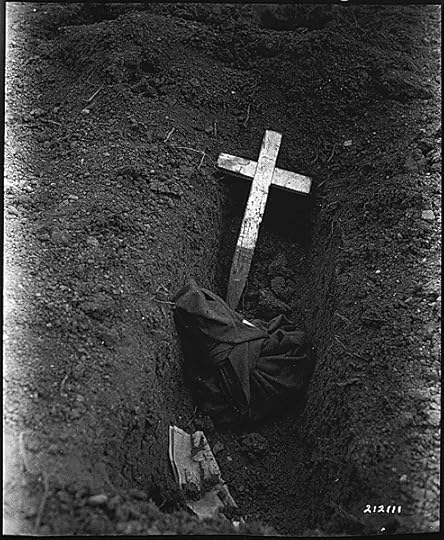
The post Palawan Massacre – Dec 1944 appeared first on Enemy in the Mirror.
March 23, 2017
Malmedy massacre – December 1944
In December 1944, 84 American POWs were killed near Malmedy, Belgium by the SS Panzer division Kampfgruppe Peiper. The term “Malmedy massacre” was later applied to a series of massacres committed by the same SS unit over several days during the Battle of the Bulge.
Although portrayed as outright atrocity in this video clip, some controversy remains regarding how calculated these executions actually were. Several former American prisoners testified that a few of their comrades had tried to escape, and some may have picked up discarded weapons to shoot at their German captors.
Upon discovery of the murdered American POWs near Malmedy, several U.S. units declared that all SS troops were to be shot on sight rather than taken prisoner. It is also possible that some American forces may have killed German prisoners in retaliation.
At the 1946 Dachau Trials, all war crimes attributed to Kampfgruppe Peiper were reviewed. 43 death sentences, 22 life sentences and 8 shorter sentences were pronounced. But after the verdict, the way in which the court had functioned was disputed, and the case was appealed to the Supreme Court of the United States. The court made no decision, but subsequent review by a U.S. Senate sub-committee noted judicial irregularities during initial interrogations of the defendants.
Because the US Army conducted a trial revision, the death sentences were commuted, and the other life sentences were subsequently commuted within the next few years.
The post Malmedy massacre – December 1944 appeared first on Enemy in the Mirror.
March 20, 2017
“I have returned” – October 1944
On 20 October, 1944, during the battle of Leyte Gulf, the U.S. Sixth Army landed on the Leyte Island in the Philippines. Shortly after the landing, General Douglas MacArthur waded ashore with his famous declaration “People of the Philippines, I have returned.”
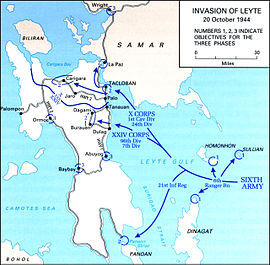
As the Japanese rushed reinforcements to the western side of the island, the U.S. Sixth Army continued to advance from the east,. With subsequent reinforcement, the American Army was reinforced successfully, and the U.S. Fifth Air Force was able to devastate further Japanese attempts at repelling the attack. In torrential rains, the American advance continued over difficult terrain to the neighboring island of Samar to the north.

In December 1944, U.S. Army units landing at Ormoc Bay fought a major land and air battle that ultimately eliminated Japanese ability to reinforce and supply the island of Leyte. Although fierce fighting continued on the island for months, the U.S. Army was now in control.
The post “I have returned” – October 1944 appeared first on Enemy in the Mirror.
March 16, 2017
Battle of the Bulge – Dec 1944
In December 1944, under overcast skies that limited Allied aerial surveillance, >250,000 German troops and armored divisions launched a surprise attack in the weakly-defended, rugged forest of Ardennes. With a thrust toward Antwerp Belgium, the advance was intended to split the Allied armies in northwest Europe.
Caught completely off guard, reeling American units fought desperate battles to stem the German advance at St.-Vith, Elsenborn Ridge, Houffalize and Bastogne (where the American General Anthony C. McAuliffe replied “nuts” to a German demand for surrender.)
Fierce American resistance on the northern and southern borders of the offensive, blocked German access to key roads needed for success. American resilience, improved flying weather, terrain favorable for defense and shortage of fuel delayed the German advance, allowing the Allies to reinforce their lines and foil the last great German offensive of the war.

20,876 Allied soldiers were killed during the Battle of the Bulge, with 42,893 wounded and 23,554 reported captured or missing. German losses totaled 15,652 killed, 41,600 wounded, and 27,582 reported captured or missing.
The post Battle of the Bulge – Dec 1944 appeared first on Enemy in the Mirror.
March 13, 2017
ふ号[兵器] Japanese Balloon Bombs – November 1944

From November 1944 to April 1945, Japan launched over 9,000 hydrogen balloons carrying antipersonnel and firebombs into the jet stream from the island of Honshu. Although many found their way to diverse regions of Western North America, only one caused fatalities – On May 5, 1945, a pregnant minister’s wife and five adolescents on a Saturday church outing were killed when they tampered with a balloon bomb that had landed in the trees of Gearhart Mountain in Southern Oregon.
When I moved to the northern Oregon coast in 2000, I became aware of this story and proceeded to research and write an historical fiction novel (with fictionalized characters) based on this event as well as the firebombing of the southern Oregon forest by a Japanese floatplane launched from a submarine and the attack on a Fort near the Columbia River by a Japanese submarine. Enemy In The Mirror: Love and Fury in the Pacific War, was published in 2012. Below is an excerpt from the book.
“Come here!” June called, waving from a point farther upstream.
Emma and the rest of the group picked their way among the rocks and clambered up the bank where June stood pointing at a clearing below. Great folds of tan colored material were tangled in the lower branches of a fir tree. They decided to investigate.
Emma paused on top of the bank before following the teenagers down into the clearing, and looked back at Arthur who was working his way up the stream bed to join them. “Come see what we found, dear,” she shouted gaily and slipped out of sight.
A large raven watched from a sun-bleached tree trunk that had been splintered by lightning. Emma could now see that the fabric tangled in the fir tree was made of quilted paper squares that appeared to have been lacquered. A metal object shaped like a cog wheel was hanging from ropes attached to a ring that gathered in the billowing fabric. The cog wheel device contained several metal containers, a barometer and an array of small sandbags. Emma thought it must be some sort of weather balloon. They’d been found around here before. Still, there was something strange looking about it.
______________
The post ふ号[兵器] Japanese Balloon Bombs – November 1944 appeared first on Enemy in the Mirror.
Enemy in the Mirror
I began by posting events around the turn This website www.enemyinmirror.com explores the consciousness, diplomacy, emotion, prejudice and psychology of 20th Century America and her enemies in wartime.
I began by posting events around the turn of the 20th century as I was researching my first novel about the Pacific War. I continued through WWII for my second novel about the Battle of the Atlantic. Now I am beginning to look at the Cold War as I gather information for my next novel about the Korean War. ...more
- Mark Scott Smith's profile
- 7 followers



